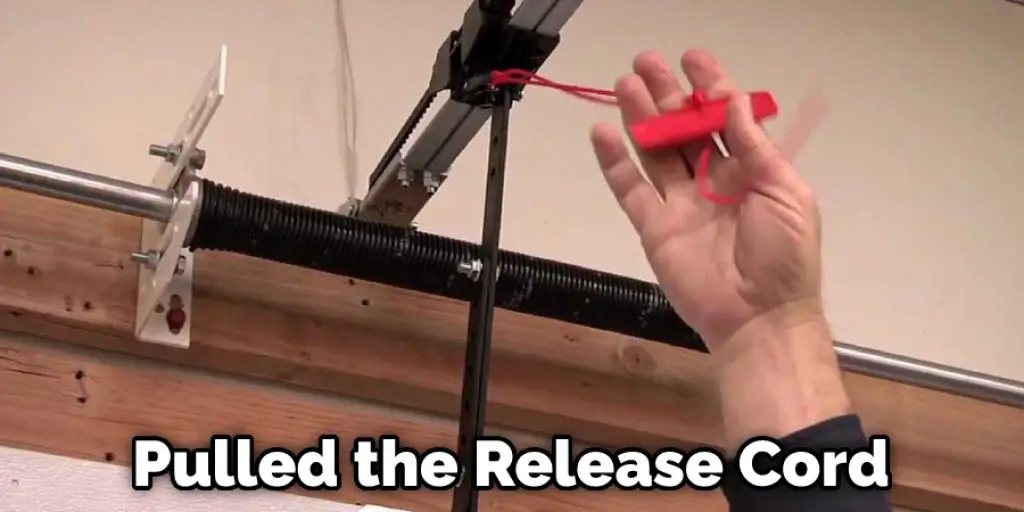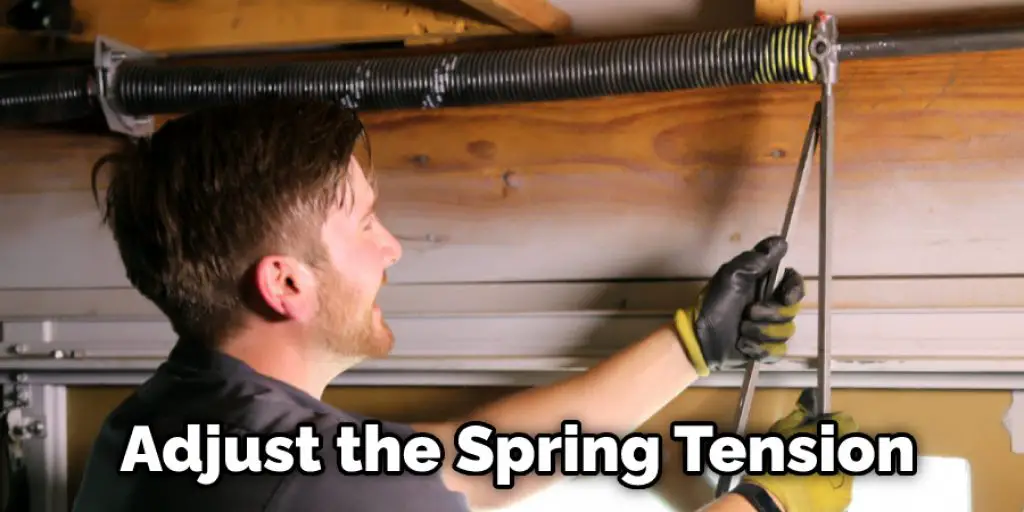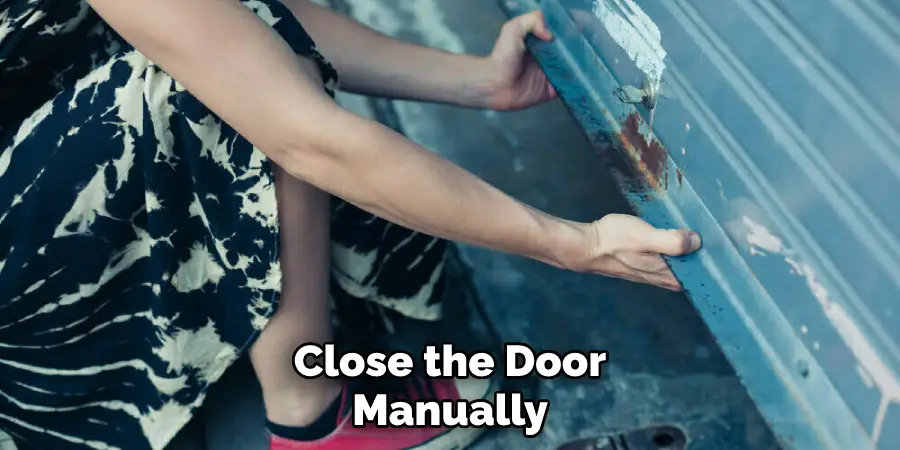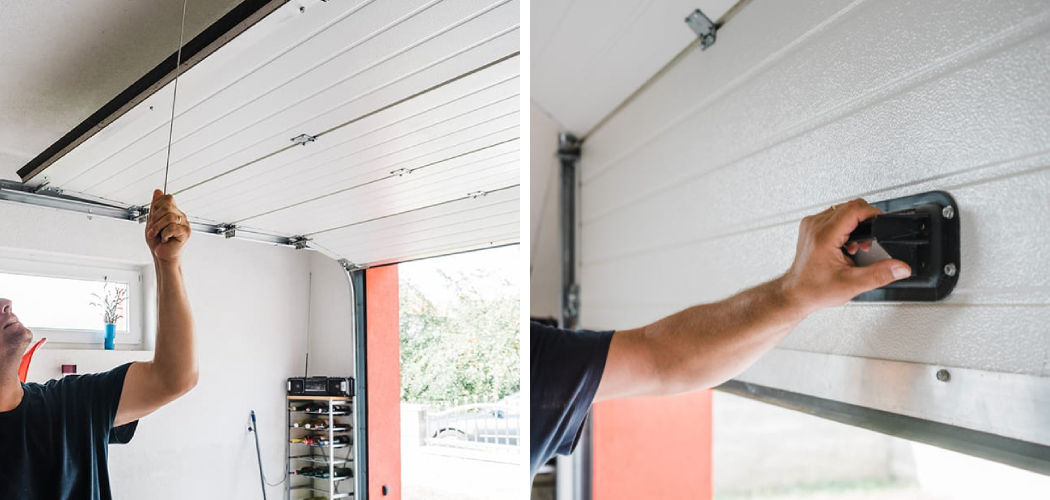Garage doors are often one of the most forgotten parts of a home until they stop working. If you find yourself in a situation where your garage door is stuck open, and there is no power, don’t worry; there are still several ways to close it. In this article, we will explore four methods that can be used to close a garage door without power. So, keep reading for more information on how to close a garage door without power!

Power outrage and storms can disable garage doors from working. If your garage door is stuck open during one of these events, there are ways to close it without relying on power. It is important to remember that you should only attempt to close your garage door if it is safe. If there is any damage to the door or surrounding area, it is best to leave it and wait for a professional to fix it.
Summary: Closing a garage door without power can be a tricky task, but there are a few ways to do it safely. One way is to use the manual release cord to disengage the door from the power opener, allowing you to lift and close the door by hand. Another option is to use a rope or strap to pull the door down from the center while standing on a ladder.
A Detailed Guide on How to Close a Garage Door Without Power
Method 1: Using the Release Cord
The release cord is a rope that dangles from the center of your garage door. It’s usually red, and it releases the tension on the door so you can open it manually. For example, if your power is out and your garage door won’t open, you can use the release cord to open it yourself.
The release cord is typically located near the top of the garage door on the right side. It may be red or black, and it should be hanging down from the trolley. The release cord is used to manually disengage the opener from the trolley so that you can open and close the door by hand.
Step 1: Find the Release Cord.
The first step is to find the release cord. It should be hanging down from the trolley, and it will be either red or black. If you can’t find it, look for a handle that says “emergency release.”
Step 2: Pull the Cord to Disengage the Door From the Opener.
Once you’ve found the release cord, pull it to disengage the door from the opener. Again, you may need to use a little bit of force to do this.
Step 3: Open and Close the Door Manually.
Once you’ve pulled the release cord, you can manually open and close the door. Be careful when doing this, as the door may be heavy and fall on you if you’re not careful.

Method 2: Using a Battery Backup
If your garage door opener has a battery backup, you can use it to close your garage door in a power outage. Most battery backups are only designed to work for a certain amount of time, so you’ll need to check the manufacturer’s instructions to see how long yours will last. Once the battery backup runs out of power, the garage door will no longer be able to close.
Step 1: Check for Battery Backup
Check to see if your garage door opener has a battery backup. Most models will have a small light when the power is out and the backup is used.

Step 2: Close the Garage Door
If your garage door opener has a battery backup, you can use it to close your garage door. Press the “Close” button on your garage door opener and hold it until the door is fully closed.
If your garage door opener does not have a battery backup, you’ll need to close the door manually.
Step 3: Secure the Garage Door
Once the door is closed, you’ll need to secure it so that it doesn’t open up again. You can do this by placing a piece of wood or a metal rod in the door’s track. This will prevent the door from being opened until the power is back on, and you can remove the object.
Method 3: Disengaging the Auto-Reverse Sensor
The auto-reverse feature is a safety measure required by law on all garage doors. It prevents people and animals from being crushed by a closing garage door. The sensors are located on either side of the bottom of the garage door opening, about six inches off the ground.

Step 1: Look for the Red Light.
The auto-reverse sensors are usually pretty easy to spot because they have a red light that turns on when they’re working correctly.
Step 2: Test the Sensors.
If you’re not sure whether or not the sensors are working, there’s a simple test you can do. Just put your hand or a piece of cardboard in the path of the sensor beam (you may need a step stool). If the door reverses when you do this, then the sensors are working fine.
Step 3: Bypass the Sensors.
If your garage door opener is equipped with an emergency release cord, it’s probably located near the bottom of the door, close to where the spring is located. Pull this cord, and the door should disengage from the opener.
If your opener doesn’t have an emergency release cord, you’ll need to disconnect the opener from the door. Again, the specifics vary depending on the model, but there’s usually a way to do it without taking it apart.
Check your owner’s manual for more specific instructions.
Step 4: Close the Door Manually.
Once you’ve disengaged the opener from the door, you should be able to close it by hand. Just lift on the door until it’s open, then let go. It should slowly come down on its own. If it doesn’t, you may need to adjust the spring tension.

Check your owner’s manual for instructions on doing this, or call a professional garage door repair service. These methods will help in how to close a garage door without power.
Precautions
- Make sure there are no people or animals in the way of the garage door before beginning this process.
- Working with garage doors can be dangerous. Use extreme caution and consult a professional if you have any doubts about your ability to complete this project safely.
- Manually close the door using the release handle. This is the safest method, but it requires someone to be present to operate the door.
- Use a C-clamp or vise grips to secure the door in the closed position. This method will keep the door from opening, but it will not provide any protection from the elements or intruders.
- Place a board or furniture against the door to prevent it from opening. This is not recommended, as it can damage the door and is not very secure.
- If you have an automated garage door, you can try to reset the system by disconnecting and reconnecting the power source. This may work, but it is not guaranteed.
- Call a professional garage door technician for assistance. This is the best option if you are unsure about safely closing your garage door without power.
What to Do If My Garage Door Opener Doesn’t Have a Manual Lock?
If your garage door opener doesn’t have a manual lock, there are still a few things you can do to close your garage door.
- First, check to see if the batteries in your remote control are working. If they’re not, replace them and try again.
- If your garage door opener still doesn’t work, see if there’s an emergency release cord that you can use to open and close the door manually. This cord is usually located near the top of the door.
- If none of these solutions work, you may need to call a professional to help you close your garage door without power.
How Do You Lock a Garage Door When It Is Broken?
It is possible to close and lock a garage door without power, but it will require some manual effort. If your garage door is not working correctly, the first step is to determine why. Once you know what is causing the problem, you can take the steps needed to fix it.
If your garage door doesn’t close because the opener is broken, you’ll need to open and close the door manually. Start by disconnecting the opener from the power source. Then, open the door halfway and release the handle. Next, use a pair of pliers to remove the spring from the bottom of the track. Finally, pull down the door until it is fully closed and locked.

If your garage door doesn’t close because the chain is broken, you’ll need to replace it. Start by disconnecting the opener from the power source. Then, remove the cover on the opener to access the chain. Finally, use a pair of pliers to remove the old chain and install a new one.
If your garage door doesn’t close because the springs are broken, you’ll need to replace them. Start by disconnecting the opener from the power source. Then, remove the bottom panel of the door to access the springs. Use a pair of pliers to remove the old springs and install new ones.
It is also possible that your garage door won’t close because something is blocking it. In this case, you’ll need to remove the obstruction and then try closing the door again.
If your garage door still doesn’t close, you may need to call a professional for help.
Conclusion
If you are in a situation where you need to close your garage door, and the power is out, there is still a way that you can do it. By using some simple methods and following these steps, you will be able to get your garage door closed without any problems. We hope you find this article on how to close a garage door without p

